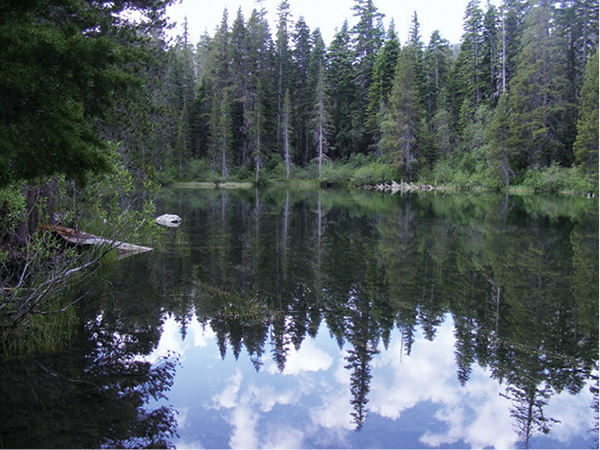
Floating Island Lake is a nice resting place along the trail to Cathedral Lake and Mount Tallac in the Desolation Wilderness.
How to Use This Guide
This guide is designed to be simple and easy to use. Each hike is described with a map and summary information that delivers the trail’s vital statistics including length, difficulty, fees and permits, park hours, canine compatibility, and trail contacts. Directions to the trailhead are provided. Information about what you’ll see along the trail, as well as about the route’s natural and cultural history, is given in the hike description. A detailed route finder (Miles and Directions) sets forth mileages between significant landmarks along the trail.
How the Hikes Were Chosen
Hikes chosen for this guide range in difficulty from flat excursions along the Truckee River in downtown Reno to more challenging treks to mountaintops and highland lakes. I’ve selected hikes throughout the region, so regardless of your starting point you’ll find a hike nearby.
While these trails are among the best, keep in mind that nearby trails may offer options better suited to your needs. Potential alternatives are suggested in the Options section at the end of hike descriptions and in the Honorable Mentions at the end of each chapter.

Floating Island Lake is a nice resting place along the trail to Cathedral Lake and Mount Tallac in the Desolation Wilderness.
Selecting a Hike
Terrain, altitude, weather, and your level of fitness should be taken into account when selecting a hike in the Reno-Tahoe region. I have rated these hikes (easy, moderate, strenuous) to give you an idea of what to expect, but these ratings are completely subjective.
Easy: The route involves minimal elevation changes, is easy to navigate, and can be completed by most hikers in less than two hours.
Moderate: The trail includes notable climbing and descending, may involve some route-finding, and can be completed in less than four hours.
Strenuous: The route includes significant elevation changes, may be narrow or exposed in sections, and takes longer than four hours to complete.
Factors other than fitness that play into hike selection include the adequacy of your gear (primarily shoes), the ratio of trail length to elevation change (gaining 200 feet in 1 mile is easy; gaining 1,000 feet in 1 mile is strenuous), and the trail’s altitude (a lakeside hike at 6,000 feet above sea level is easier than climbing along the Tahoe rim at 10,000 feet).
In addition to listing hikes that might appeal to the hiker seeking a certain experience, the Trail Finder lists the trails by level of difficulty. If you are hiking with a group, select a hike that’s appropriate for the least fit and prepared in your party.
Hiking times are based on the assumption that on flat ground, most walkers average 2 miles per hour. Adjust that rate by the steepness of the terrain and your level of fitness (subtract time if you’re an aerobic animal and add time if you’re hiking with kids), and you have a ballpark hiking duration. Be sure to add more time if you plan to picnic or take part in other activities like birding or photography.